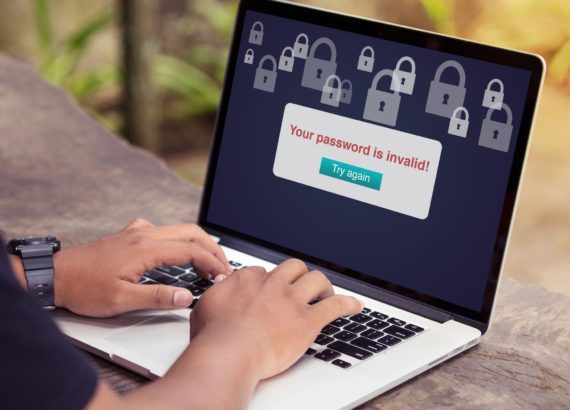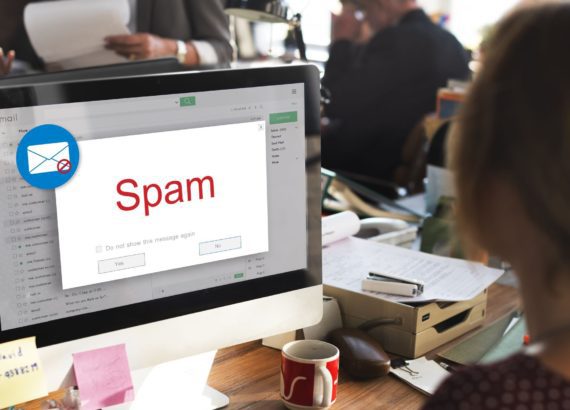Everyone–and we mean everyone–is vulnerable to hacking. You’ve probably already seen some of the main hacking tactics we’ve talked about here, like phishing and social engineering. Maybe you’ve even taken steps to beef up your cybersecurity. However, it’s important to know even the savviest person is susceptible to hacking. So, how do you know if you’ve been hacked?
It’s notoriously difficult–and that’s how hackers like it. If you can’t detect them, it makes it easier for hackers to break in and steal your information or money. Fortunately, there are some telltale signs to be on the lookout for. From the blatant (you get a pop-up asking you to pay a ransom) to the obscure (funds are missing from an online account or your web searches redirect), let’s go over how to know if you’ve been hacked.
How hackers hack
There are a couple of different ways that hackers use information and/or personal computing devices. Usually, the goal is financial in nature, and they can do this by gaining access to your accounts, demanding you pay ransoms or blackmailing you. They may try to infect your computer with malware, which has a whole host of negative possibilities. With malware, hackers can steal your identity, money, or even pose as you to trick the people you care about.

How to know if you have malware
Malware is the nasty software hackers use to gain access to your device, track your keystrokes, or encrypt your files. Along with stealing your information, hackers can also use malware to delete data or take over your computer’s functions. Sometimes hackers secretly package malware in free downloads or in email attachments. With that in mind, how can you tell if there’s any on your device?
Sign 1: Your computer just got super slow or ran out of memory
Even if you don’t see new software installed, you may observe that your computer seems extra slow or that programs crash regularly. That’s likely because the malware is using up your CPU and memory. It may also be working remotely with the hacker’s computer to download more malware, like ransomware, on your device.
Sign 2: You get A LOT of notifications and pop-ups
Malware that displays a bunch of pop-ups is called adware. After you click on them, these advertisements may download even more malware on your device. Or they may take you to a phishing website to collect your information.
Sign 3: You can’t access your files
You might have a ransomware infection. Ransomware is a particularly nasty type of malware that encrypts your files so you cannot access them. Once ransomware is installed, a notification will pop up on your device. The message will tell you that you’ve been hacked and ask you to pay a ransom (usually in cryptocurrency) to unlock your files.
Sign 4: Your browser redirects
Malware can infect your browser too. Usually, it comes in the form of a toolbar, extension, or plugin. You may notice that your homepage goes to a new default page or that new tabs open as you search.
Sign 5: Your antivirus software isn’t on
If you didn’t do it, a hacker probably did. In some cases, you may not be able to turn your antivirus software back on.
How to know if your account has been compromised
Hackers can get account information through malware, but they have other methods too. One is password spraying, where they try the most common passwords to break into your account. They may also try to phish you and get you to enter information on a fake website. Or, they may have bought your login information on the dark web. (You can check a site like haveibeenpwned.com to see if your email address or phone number leaked due to a data breach.) Using your data, hackers can drain your bank account, pose as you to trick others, or steal your identity.
Sign 1: You get a notification that someone has logged into your account
This is a handy tool that social media platforms and email providers use to keep your accounts secure. If the login attempt wasn’t you, it’s a sign that someone is trying to break in. They likely have at least one piece of information. If you also get a notification from your multi-factor authentication, it’s time to update your password because someone else has it.
Sign 2: You can’t log in to your account anymore
Hopefully, you just forgot your password. But if not, it’s likely that someone has accessed your account and changed the login information to lock you out.
Sign 3: People tell you that you’ve sent them weird emails or messages on social media
Some hackers take over accounts to try to phish other people. After all, you’re much more likely to click on a link in an email or social media message from a friend or family member.
Sign 4: There’s money missing from your account
If you notice a significant amount of money missing from your account, take action immediately. Notify your bank that your account has been compromised.

What to do if you’ve been hacked
If you notice any of the signs that you’ve been hacked, take immediate action. Report all cyberattacks to the FBI’s Internet Crime Complaint Center. And then:
- Run a scan for malware on your device with your anti-virus software. If you find any suspicious software, delete it.
- You can try to restore browsers and software to their default settings to get rid of malware.
- Change your password. No, really. Do it right now.
- Get help! Notify your bank if you suspect someone has drained your account.
- Warn friends and family if your social media or email accounts were hacked.
How to prevent hacking attempts
To keep prevent hacking, follow these steps.
- Once you’ve changed your password, use a password manager to keep track of your login information. Plan to regularly update your password, about every 60-90 days.
- Set up multi-factor authentication. Even if a hacker knows your password, this extra layer of protection can keep your account information safe.
- Keep your antivirus software updated. Set your software up to run auto-installs so you don’t even have to think about it.
- On that note, keep all other software updated too. Software patches prevent vulnerabilities that hackers can take advantage of.
- Make backups of your files and keep them offline on a hard drive. This step will come in handy if you ever encounter ransomware.
- Don’t click on random pop-ups. If you need to escape a pop-up and can’t click out of it, power your computer down and restart it.
- Understand what phishing attacks look like and learn how to recognize them in your inbox.
Last words
It’s important to know how to recognize if you’ve been hacked. Knowing these signs will help you take action quickly in case any of your accounts have been compromised or if there is malware on your device. Take the steps necessary to prevent hacking and report any hacking attempts you encounter out in the wild. Good luck and stay safe out there!








